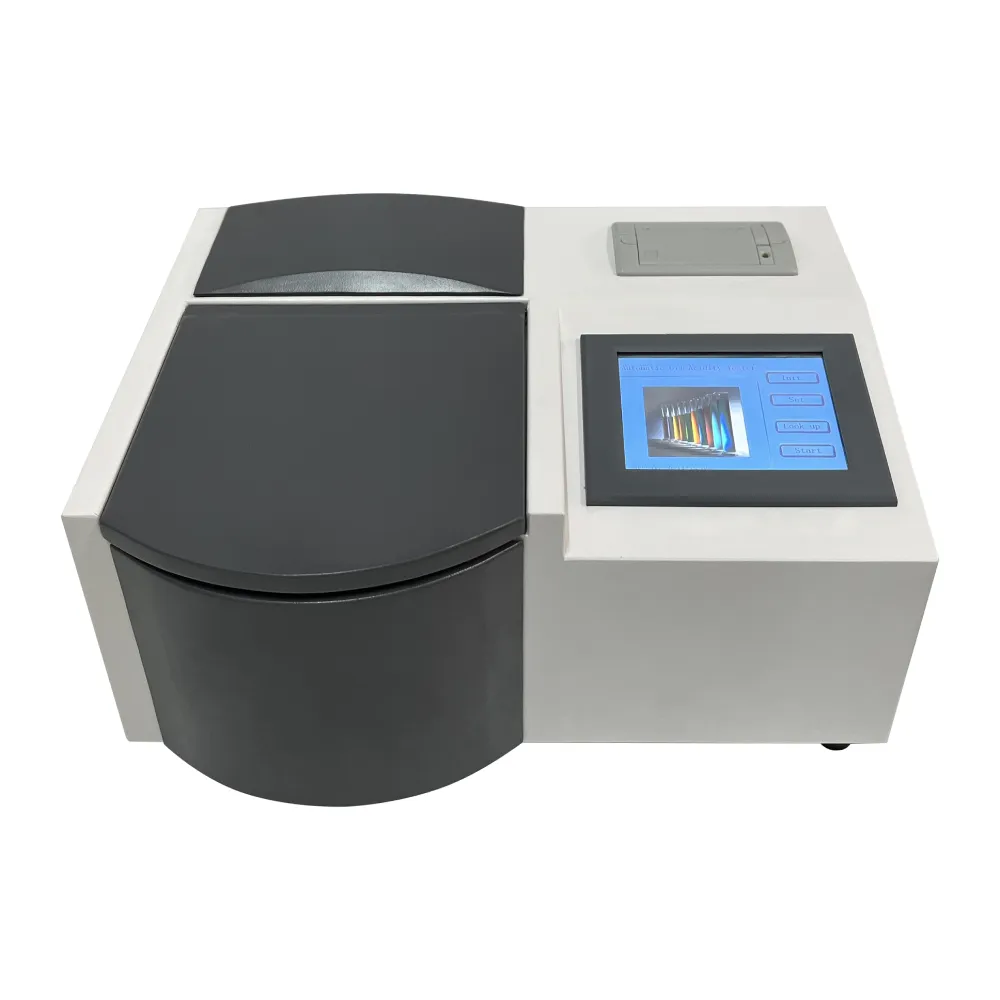TEL:
+86-0312-3189593
 English
English

Telephone:0312-3189593

Email:sales@oil-tester.com

-
 Afrikaans
Afrikaans -
 Albanian
Albanian -
 Amharic
Amharic -
 Arabic
Arabic -
 Armenian
Armenian -
 Azerbaijani
Azerbaijani -
 Basque
Basque -
 Belarusian
Belarusian -
 Bengali
Bengali -
 Bosnian
Bosnian -
 Bulgarian
Bulgarian -
 Catalan
Catalan -
 Cebuano
Cebuano -
 China
China -
 China (Taiwan)
China (Taiwan) -
 Corsican
Corsican -
 Croatian
Croatian -
 Czech
Czech -
 Danish
Danish -
 Dutch
Dutch -
 English
English -
 Esperanto
Esperanto -
 Estonian
Estonian -
 Finnish
Finnish -
 French
French -
 Frisian
Frisian -
 Galician
Galician -
 Georgian
Georgian -
 German
German -
 Greek
Greek -
 Gujarati
Gujarati -
 Haitian Creole
Haitian Creole -
 hausa
hausa -
 hawaiian
hawaiian -
 Hebrew
Hebrew -
 Hindi
Hindi -
 Miao
Miao -
 Hungarian
Hungarian -
 Icelandic
Icelandic -
 igbo
igbo -
 Indonesian
Indonesian -
 irish
irish -
 Italian
Italian -
 Japanese
Japanese -
 Javanese
Javanese -
 Kannada
Kannada -
 kazakh
kazakh -
 Khmer
Khmer -
 Rwandese
Rwandese -
 Korean
Korean -
 Kurdish
Kurdish -
 Kyrgyz
Kyrgyz -
 Lao
Lao -
 Latin
Latin -
 Latvian
Latvian -
 Lithuanian
Lithuanian -
 Luxembourgish
Luxembourgish -
 Macedonian
Macedonian -
 Malgashi
Malgashi -
 Malay
Malay -
 Malayalam
Malayalam -
 Maltese
Maltese -
 Maori
Maori -
 Marathi
Marathi -
 Mongolian
Mongolian -
 Myanmar
Myanmar -
 Nepali
Nepali -
 Norwegian
Norwegian -
 Norwegian
Norwegian -
 Occitan
Occitan -
 Pashto
Pashto -
 Persian
Persian -
 Polish
Polish -
 Portuguese
Portuguese -
 Punjabi
Punjabi -
 Romanian
Romanian -
 Russian
Russian -
 Samoan
Samoan -
 Scottish Gaelic
Scottish Gaelic -
 Serbian
Serbian -
 Sesotho
Sesotho -
 Shona
Shona -
 Sindhi
Sindhi -
 Sinhala
Sinhala -
 Slovak
Slovak -
 Slovenian
Slovenian -
 Somali
Somali -
 Spanish
Spanish -
 Sundanese
Sundanese -
 Swahili
Swahili -
 Swedish
Swedish -
 Tagalog
Tagalog -
 Tajik
Tajik -
 Tamil
Tamil -
 Tatar
Tatar -
 Telugu
Telugu -
 Thai
Thai -
 Turkish
Turkish -
 Turkmen
Turkmen -
 Ukrainian
Ukrainian -
 Urdu
Urdu -
 Uighur
Uighur -
 Uzbek
Uzbek -
 Vietnamese
Vietnamese -
 Welsh
Welsh -
 Bantu
Bantu -
 Yiddish
Yiddish -
 Yoruba
Yoruba -
 Zulu
Zulu
فېۋرال . 12, 2025 10:52
Back to list
short circuit impedance of transformer
How to Effectively Conduct a Short Circuit Test on a Three-Phase Transformer
2. Current Supply Energize the transformer at a reduced voltage. A primary current near the rated full-load current should be applied to prevent overheating or damaging the transformer, crucial for maintaining operational safety and integrity. 3. Measure and Record Utilize the voltmeter and ammeter to record the voltage drop and current flow across the primary winding. These values are pivotal in calculating the transformer's equivalent impedance. The wattmeter will indicate the actual power loss, which reflects the copper loss due to the winding resistance when subjected to a full-load current. Data Interpretation and Utilization Analyze the recorded values to determine the transformer's equivalent impedance (Z_eq), resistive component, and reactive component (X_eq). These values are instrumental in assessing the transformer's voltage regulation, an essential performance parameter that impacts system stability and efficiency. Safety and Troubleshooting Safety is paramount during the short circuit test. Implementing isolation barriers and using personal protective equipment (PPE) minimizes risks from electrical hazards. In case of unexpected readings or transformer behavior, cease testing immediately to prevent damage and review the transformer setup and connections to identify possible wiring or instrument faults. Conclusion and Recommendations A well-conducted short circuit test not only highlights the transformer's copper loss and efficiency but also offers a wealth of information for further design improvements and maintenance planning. By adhering to precise procedures, leveraging reliable instruments, and interpreting data accurately, electrical professionals can ensure that three-phase transformers operate optimally within electrical systems. By sharing detailed insights from personal experience and expert knowledge, this article stands as a valuable resource for engineers and technicians looking to deepen their understanding and refine their testing practices, ultimately contributing to better electrical system performance worldwide.


2. Current Supply Energize the transformer at a reduced voltage. A primary current near the rated full-load current should be applied to prevent overheating or damaging the transformer, crucial for maintaining operational safety and integrity. 3. Measure and Record Utilize the voltmeter and ammeter to record the voltage drop and current flow across the primary winding. These values are pivotal in calculating the transformer's equivalent impedance. The wattmeter will indicate the actual power loss, which reflects the copper loss due to the winding resistance when subjected to a full-load current. Data Interpretation and Utilization Analyze the recorded values to determine the transformer's equivalent impedance (Z_eq), resistive component, and reactive component (X_eq). These values are instrumental in assessing the transformer's voltage regulation, an essential performance parameter that impacts system stability and efficiency. Safety and Troubleshooting Safety is paramount during the short circuit test. Implementing isolation barriers and using personal protective equipment (PPE) minimizes risks from electrical hazards. In case of unexpected readings or transformer behavior, cease testing immediately to prevent damage and review the transformer setup and connections to identify possible wiring or instrument faults. Conclusion and Recommendations A well-conducted short circuit test not only highlights the transformer's copper loss and efficiency but also offers a wealth of information for further design improvements and maintenance planning. By adhering to precise procedures, leveraging reliable instruments, and interpreting data accurately, electrical professionals can ensure that three-phase transformers operate optimally within electrical systems. By sharing detailed insights from personal experience and expert knowledge, this article stands as a valuable resource for engineers and technicians looking to deepen their understanding and refine their testing practices, ultimately contributing to better electrical system performance worldwide.
Previous:
Latest news
-
Testing Equipment Industry Sees Major Advancements in 2025: Smart & Precision Technologies Lead the WayNewsJun.06,2025
-
Applications of Direct Current Generators in Renewable Energy SystemsNewsJun.05,2025
-
Hipot Tester Calibration and Accuracy GuidelinesNewsJun.05,2025
-
Digital Circuit Breaker Analyzer Features and BenefitsNewsJun.05,2025
-
Benefits of Real-Time Power Quality Monitoring Devices for Industrial EfficiencyNewsJun.05,2025
-
Earth Fault Loop Testing in High-Rise Building Electrical SystemsNewsJun.05,2025



